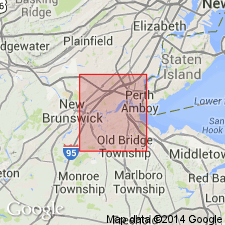
- Usage in publication:
-
- Amboy stoneware clay
- Modifications:
-
- Named
- Dominant lithology:
-
- Clay
- AAPG geologic province:
-
- Atlantic Coast basin
Summary:
Amboy stoneware clay, also called Amboy fire clay, is an economic term for a clay bed, 30 to 80 ft thick, forming top member of the Raritan formation in northeastern NJ.
Source: GNU records (USGS DDS-6; Reston GNULEX).
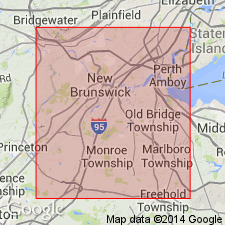
- Usage in publication:
-
- Amboy stoneware clay
- Modifications:
-
- Overview
- AAPG geologic province:
-
- Atlantic Coast basin
Summary:
Amboy stoneware clay varies in color from light gray through darker grays to nearly black with considerable amount of carbonaceous material. Thickness ranges from 0 to 30 ft. Where present, forms impermeable layer between Old Bridge sand member (new name) of Raritan and Magothy formation.
Source: GNU records (USGS DDS-6; Reston GNULEX).
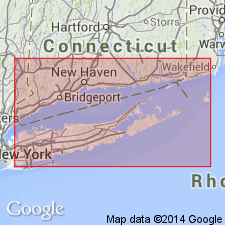
- Usage in publication:
-
- Amboy stoneware clay member*
- Modifications:
-
- Overview
- AAPG geologic province:
-
- Atlantic Coast basin
Summary:
Amboy Stoneware Clay of Kummel and Knapp (1904) adopted as Amboy Stoneware Clay Member of Magothy Formation. Overlies Old Bridge Sand Member of Magothy; underlies Morgan beds (informal name) of Magothy. Age is Late Cretaceous (Santonian)
Source: GNU records (USGS DDS-6; Reston GNULEX).
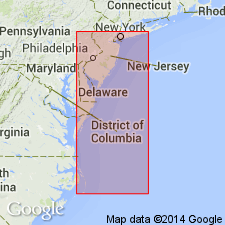
- Usage in publication:
-
- Amboy stoneware clay member*
- Modifications:
-
- Areal extent
- AAPG geologic province:
-
- Atlantic Coast basin
Summary:
Upper Cretaceous Amboy Stoneware Clay Member of Magothy Formation geographically extended in subsurface to Long Island, NY. Underlies Morgan beds (informal); overlies Old Bridge Sand Member, both of Magothy. "Amboy is an excellent marker horizon in northeast NJ and much of Long Island." [Authors based their work on Sirkin (1974) who said rocks in Fire Island well (part of Long Island) are only equivalent to Amboy, therefore extension to NY not valid.]
Source: GNU records (USGS DDS-6; Reston GNULEX).
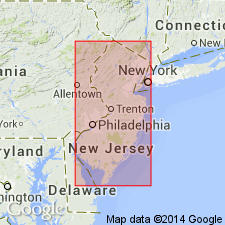
- Usage in publication:
-
- Amboy stoneware clay member
- Modifications:
-
- Overview
- AAPG geologic province:
-
- Atlantic Coast basin
Summary:
This author (from Kean College, NJ) supports U.S. Geological Survey position expressed by Wolf and Pakiser (1971: U.S.G.S. Prof. Paper 750-B, p. 35-47) that the Amboy Stoneware Clay Member belongs in the Magothy rather than the Raritan.
Source: GNU records (USGS DDS-6; Reston GNULEX).
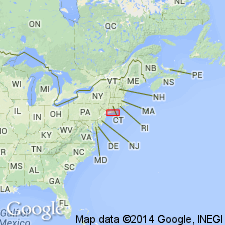
- Usage in publication:
-
- Amboy stoneware clay member*
- Modifications:
-
- Areal extent
- AAPG geologic province:
-
- Atlantic Coast basin
Summary:
With pollen stratigraphy, a clay bed within a sand sequence as well as a clay unit capping the sand sequence can be identified in 13 wells on Long Island, NY. On basis of pollen zones the correlatives with both the Woodbridge Clay Member and South Amboy Fire Clay Member of the Raritan Formation in NJ may occur as thin clay beds in the Lloyd Sand Member of the Raritan Formation in Long Island, NY. The overlying clay member of the Raritan Formation in Long Island my be correlative with the South Amboy Fire Clay Member of the Raritan Formation or the Amboy Stoneware Clay Member of the Magothy Formation in NJ. Therefore the Lloyd Sand Member of the Raritan Formation in Long Island becomes a "floating" stratigraphic unit and depending on pollen zones could be correlative with the Farrington Sand Member in the lower part of the Raritan Formation, or the Sayreville Sand Member in the middle part of the Raritan Formation, or the Old Bridge Sand Member of the Magothy Formation all in NJ. This information geographically restricts the Amboy, Old Bridge, and South Amboy Members from Long Island, NY.
Source: GNU records (USGS DDS-6; Reston GNULEX).
For more information, please contact Nancy Stamm, Geologic Names Committee Secretary.
Asterisk (*) indicates published by U.S. Geological Survey authors.
"No current usage" (†) implies that a name has been abandoned or has fallen into disuse. Former usage and, if known, replacement name given in parentheses ( ).
Slash (/) indicates name conflicts with nomenclatural guidelines (CSN, 1933; ACSN, 1961, 1970; NACSN, 1983, 2005, 2021). May be explained within brackets ([ ]).

